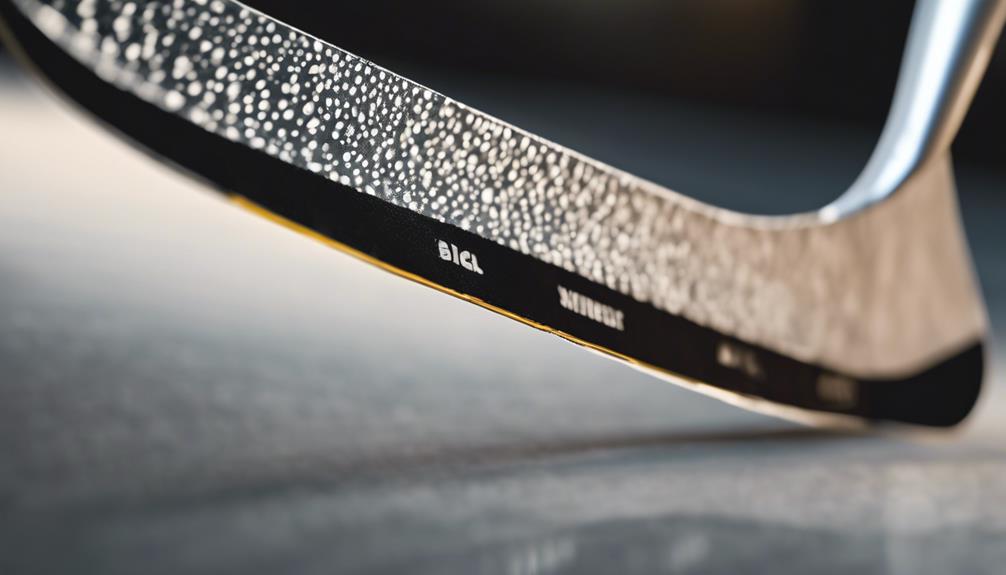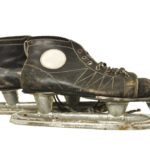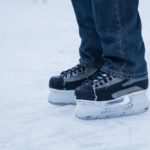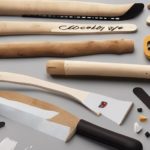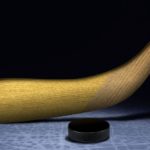Understanding the sharpness of hockey skate blades is crucial for players at every level of the game. The precision of these blades can significantly impact a player's performance on the ice, influencing their speed, agility, and overall control.
However, the question remains: just how sharp should these blades be? Exploring the intricacies of blade sharpness, from the science behind sharpening techniques to the practical implications for players, reveals a depth of knowledge that may surprise even seasoned skaters.
Importance of Blade Sharpness
Maintaining the sharpness of hockey skate blades is crucial for optimal performance on the ice, as it directly impacts a player's agility, speed, and control during gameplay. Blade maintenance ensures that the edges of the skate blades remain keen, allowing for better maneuverability and responsiveness on the ice.
A sharp blade bites into the ice more effectively, providing increased stability and precision during quick turns and stops. This enhanced grip enhances the player's ability to accelerate rapidly and make swift changes in direction, ultimately improving overall performance benefits.
Consistent blade maintenance not only prolongs the lifespan of the skates but also reduces the risk of injury by ensuring that the player maintains control over their movements with confidence and ease.
Science Behind Sharpening Techniques
The precision of hockey skate blade sharpness is intricately linked to the scientific principles of sharpening techniques used to ensure optimal performance on the ice. Sharpening techniques impact blade durability and edge retention through:
- Grinding Process: The method of grinding the blade determines its sharpness and longevity.
- Hollow Radius: Adjusting the hollow radius affects the contact area with the ice, influencing both grip and glide.
- Blade Alignment: Proper alignment ensures even distribution of pressure on the edges, enhancing stability.
- Finishing Touches: Polishing and deburring remove imperfections, contributing to smoother movements and better edge retention.
Impact on Speed and Agility
Achieving optimal sharpness in hockey skate blades significantly influences speed and agility on the ice, directly impacting a player's performance. Blade maintenance plays a crucial role in ensuring that the edges are sharp enough to provide the necessary bite into the ice.
A well-maintained blade allows for precise maneuvers, quick turns, and better control at high speeds. The sharpness of the blades enhances the skater's ability to push off and accelerate efficiently, contributing to overall speed on the ice.
Moreover, sharp blades reduce the effort required for each stride, leading to improved agility and maneuverability. Performance enhancement is evident when skaters can effortlessly glide, stop, and change direction with precision, all of which are facilitated by sharp skate blades.
Signs of Dull Blades
Blade dullness in hockey skates manifests through decreased bite into the ice and compromised maneuverability, impacting player performance on the rink. Signs of dull blades include:
- Reduced Grip: Dull blades struggle to dig into the ice, leading to less traction and stability during pushes and turns.
- Difficulty Turning: Maneuvering becomes challenging as the blades lose their sharpness, affecting the player's ability to pivot quickly.
- Chattering Noise: Dull blades produce a distinctive chattering sound on the ice due to decreased cutting efficiency.
- Uneven Edges: Inspecting the skate edges reveals nicks, rounded corners, or unevenness, indicating the need for sharpening to maintain peak performance.
Regular blade maintenance and sharpening are crucial to uphold optimal performance on the ice.
How Often to Sharpen
Proper maintenance of hockey skate blades includes a strategic sharpening schedule to ensure consistent peak performance on the ice. Sharpening frequency is influenced by various factors such as ice conditions, frequency of use, and personal preference.
As a general guideline, recreational players may find sharpening their blades after 15-20 hours of ice time adequate, while competitive players may need to sharpen them more frequently, around every 10-15 hours. However, it is crucial to also consider the quality of the sharpening, as improper sharpening can lead to decreased blade lifespan and performance.
Blade maintenance extends beyond sharpening and includes regular checks for nicks, burrs, and proper alignment to guarantee optimal functionality and safety on the ice.
DIY Vs. Professional Sharpening
When considering the sharpening of hockey skate blades, a crucial decision arises between do-it-yourself methods and professional sharpening services.
- Blade longevity: Professional sharpening ensures consistent edge maintenance, potentially prolonging the life of the blades.
- Self-sharpening: DIY methods may lack precision, leading to uneven edges and potentially reducing the overall longevity of the blades.
- Cost comparison: While DIY methods may seem cost-effective initially, frequent sharpening mistakes can lead to the need for blade replacements sooner, potentially making professional services more cost-efficient in the long run.
- Skill level: Professional sharpening requires specialized equipment and expertise, ensuring a precise and reliable sharpening process that may be challenging to replicate accurately at home.
Frequently Asked Questions
Can the Shape of the Hollow on a Skate Blade Affect Performance?
The hollow shape on a skate blade can significantly impact performance. Variances in hollow shapes, such as deeper or shallower cuts, influence skater stability, agility, and speed on the ice. Understanding these nuances is crucial for optimizing performance.
Are There Any Safety Concerns Associated With Skating on Dull Blades?
Safety precautions are crucial when skating on dull blades. Dull edges can lead to reduced control, increased risk of falls, and potential injuries. Regular blade maintenance, such as sharpening by a professional, is essential for optimal performance and safety.
How Does the Type of Ice Surface (Indoor Vs Outdoor) Impact Blade Sharpness?
The type of ice surface, whether indoor or outdoor, can impact blade sharpness due to outdoor durability challenges and differences in ice texture. Outdoor skating can lead to quicker dulling of blades compared to indoor rinks.
Can Improper Sharpening Techniques Lead to Long-Term Damage to the Skate Blades?
Like a sculptor chiseling marble, improper sharpening techniques can chip away at blade durability, leading to long-term damage. Potential risks include decreased performance impact, emphasizing the vital role of proper techniques, sharpening tools, and blade maintenance.
Is There a Recommended Break-In Period for Newly Sharpened Blades Before Optimal Performance Is Achieved?
Blade maintenance is crucial to optimize performance. A break-in period allows for edge alignment and blade care to settle, enhancing stability and maneuverability. Following recommended guidelines ensures longevity and peak functionality of sharpened skate blades.

